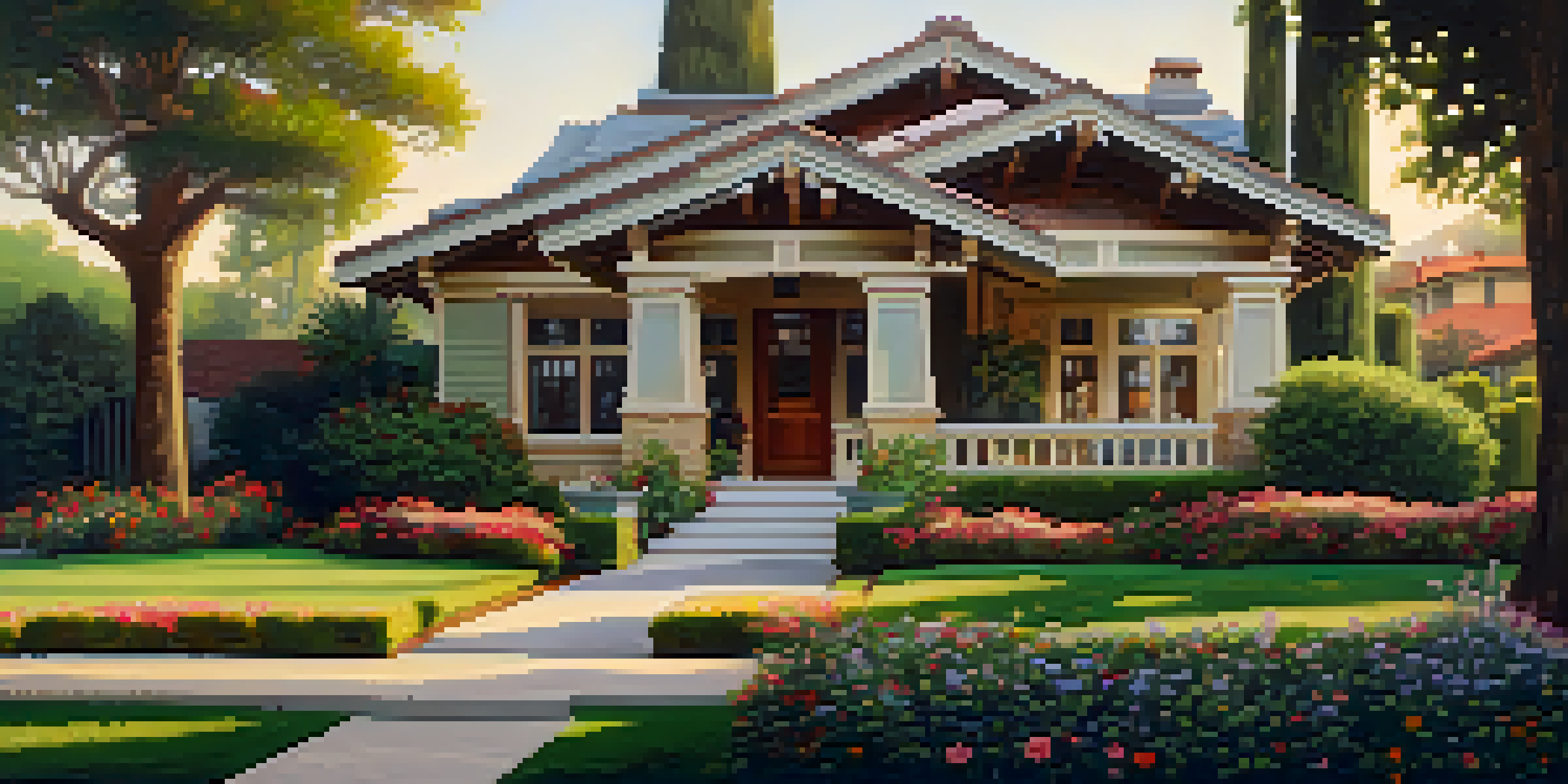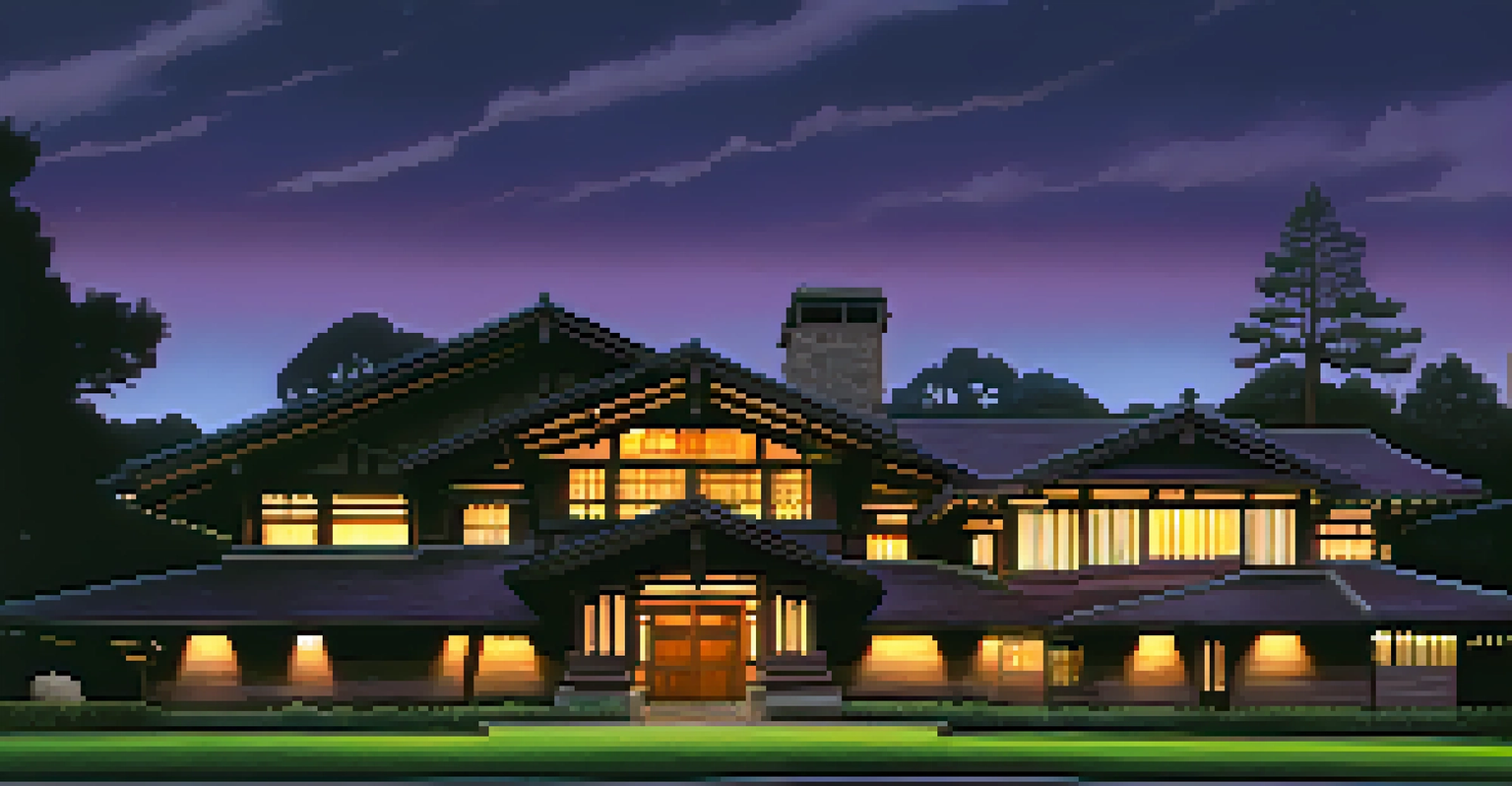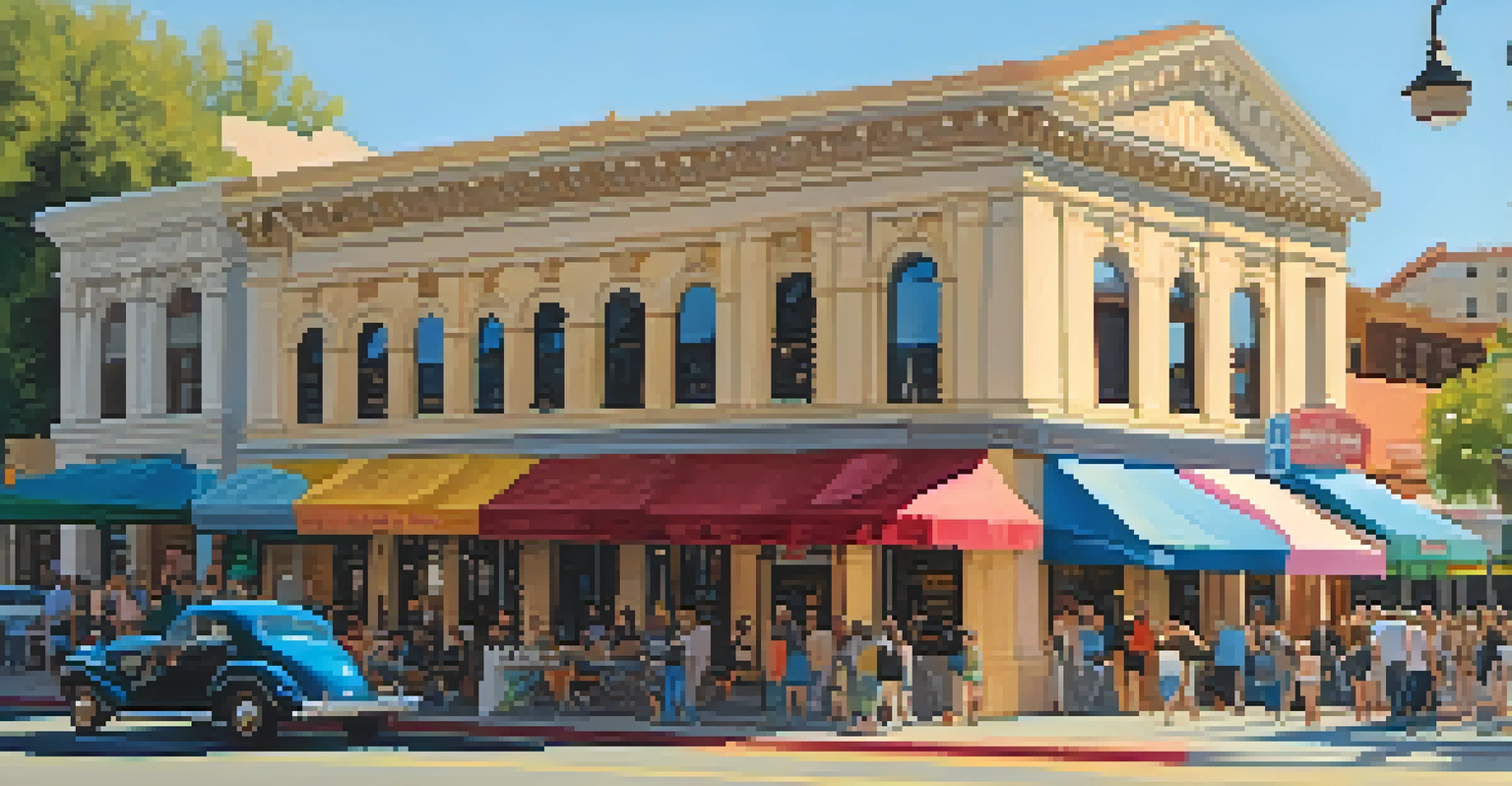The Impact of Pasadena's Architecture on Film Aesthetics

Understanding Pasadena's Unique Architectural Landscape
Pasadena is home to a rich tapestry of architectural styles, from the iconic Craftsman homes to the grandeur of Beaux-Arts structures. This diversity creates a visually stimulating environment that filmmakers find irresistible. The city’s historical significance adds layers of context that enhance narratives, making it a favored backdrop for various genres.
Architecture is the learned game, correct and magnificent, of forms assembled in the light.
Architectural elements like intricate facades and vibrant colors not only serve as stunning visuals but also help convey themes and emotions in film. For instance, the sprawling estates of Pasadena can evoke feelings of nostalgia or opulence, which filmmakers cleverly use to enhance storytelling. This unique architectural identity sets the tone for many cinematic experiences.
Moreover, Pasadena's commitment to preserving its architectural heritage ensures that filmmakers can rely on authentic settings. This authenticity resonates with audiences, making the film experience more immersive. The interplay of light, shadow, and texture in these historic buildings invites creativity, inspiring directors to craft memorable scenes.
The Role of Pasadena in Classic Films
Pasadena has made its mark in the film industry, serving as a backdrop for classics like 'The Graduate' and 'La La Land.' These films showcase the city's architectural beauty, integrating it seamlessly into their narratives. The iconic Gamble House, for instance, not only served as a key location but also as a character that added depth to the storyline.

In 'The Graduate,' the mid-century modern aesthetic of Pasadena reflects the protagonist's disillusionment and search for identity. This clever use of architecture helps ground the story in a specific time and place, making the protagonist's journey more relatable. Such thoughtful integration of setting and story is what elevates these films to cult status.
Pasadena's Architectural Diversity
Pasadena's unique blend of architectural styles enhances film narratives, providing filmmakers with visually rich settings that resonate with audiences.
Likewise, 'La La Land' harnesses the charm of Pasadena's streets and buildings to evoke a sense of nostalgia and romance. The film’s vibrant colors and architectural details transport viewers to a dreamlike version of Los Angeles, showcasing how Pasadena's aesthetics can amplify emotional narratives. This synergy between architecture and film aesthetics creates a lasting impression on audiences.
Modern Films and Pasadena's Architectural Influence
In recent years, filmmakers continue to turn to Pasadena for its unique architectural backdrop. Movies like 'The Prestige' and series such as 'The Big Bang Theory' highlight the city’s historic buildings, blending modern storytelling with classic aesthetics. This fusion creates a visual richness that appeals to diverse audiences.
The details are not the details. They make the design.
The contrast between Pasadena's historic architecture and contemporary narratives allows filmmakers to explore themes of change and tradition. For instance, in 'The Prestige,' the Victorian-era architecture becomes a canvas for a story about rivalry and ambition, emphasizing the film’s darker undertones. This clever use of setting adds layers of meaning to the overall narrative.
Furthermore, Pasadena's architecture offers a variety of settings that suit different genres, from romantic comedies to thrillers. Filmmakers can easily find locations that match their vision, whether it's a quaint café or a grand mansion. This versatility makes Pasadena an attractive location for filmmakers looking to create visually compelling stories.
Pasadena's Influence on Set Design and Cinematography
The architectural styles of Pasadena not only serve as filming locations but also inspire set design choices. Filmmakers often replicate the city's iconic elements in their productions, creating spaces that resonate with the audience. This is evident in various films where set designers reference Pasadena's unique features to enhance authenticity.
Cinematographers also draw inspiration from Pasadena's architecture, utilizing its structures to frame shots creatively. The interplay of light and shadow created by the buildings can set the mood for a scene, whether it’s a suspenseful moment or a romantic encounter. This use of architectural elements elevates the visual storytelling.
Cinematic Legacy of Pasadena
Classic films like 'The Graduate' and 'La La Land' showcase Pasadena's beauty, using its architecture to deepen storytelling and evoke emotions.
Additionally, Pasadena's diverse landscape allows for dynamic shots that can shift between urban and natural settings seamlessly. Directors often take advantage of this variety, weaving together scenes that showcase the city’s architectural beauty and its surrounding landscapes. Such thoughtful integration of environment and narrative enriches the viewer's experience.
Architectural Festivals and Their Cinematic Impact
Pasadena hosts various architectural festivals that celebrate its rich heritage, drawing attention from filmmakers and enthusiasts alike. Events like the Pasadena Showcase House of Design highlight the city’s architectural gems, providing inspiration for countless productions. These festivals foster a deeper appreciation for the interplay between architecture and film.
During these events, filmmakers often engage with architects and designers, creating opportunities for collaboration. Such partnerships can lead to innovative cinematic techniques that highlight architectural beauty in unique ways. This collaboration not only benefits filmmakers but also helps promote Pasadena’s architectural identity.
Furthermore, the exposure from these festivals can lead to increased tourism and interest in the city as a filming location. As filmmakers showcase Pasadena's beauty on screen, audiences become more curious about exploring the city themselves. This cyclical relationship between architecture and film continues to thrive, benefiting both industries.
Cultural Significance of Pasadena's Architecture in Film
Pasadena's architecture is not just visually appealing; it also carries cultural significance that filmmakers tap into. Each building tells a story, representing different eras and societal values that filmmakers can utilize to enrich their narratives. This depth adds layers of meaning that resonate with viewers on a cultural level.
For example, the Craftsman style reflects a return to simplicity and craftsmanship, mirroring themes of authenticity and connection in films. This architectural style can evoke feelings of nostalgia and warmth, making it a popular choice for productions that focus on family or community. Such cultural references enhance the storytelling experience.
Future of Architecture in Film
As technology evolves, Pasadena's distinctive architectural identity will continue to inspire filmmakers, blending tradition with contemporary aesthetics.
Moreover, the architectural diversity of Pasadena allows filmmakers to explore social themes, from class struggles to cultural identity. By incorporating these elements into their narratives, filmmakers can create more relatable and thought-provoking stories. This cultural richness, rooted in Pasadena's architecture, not only enhances films but also educates audiences about the history and values of the city.
The Future of Pasadena's Architecture in Film
As film technology evolves, so does the way architects and filmmakers collaborate. The rise of virtual production techniques and digital sets may change how Pasadena's architecture is used in film. However, the city's distinctive style will always inspire filmmakers, who seek to capture its essence in new and innovative ways.
Filmmakers are increasingly interested in blending traditional architecture with modern aesthetics, creating a unique visual language that pays homage to Pasadena’s roots while pushing creative boundaries. This fusion can lead to exciting new narratives that reflect contemporary society while honoring the past.

Looking ahead, Pasadena's architectural identity is sure to remain a significant influence in cinema. As filmmakers continue to tell stories that resonate with audiences, the city’s rich architectural heritage will be a source of inspiration, ensuring that Pasadena's charm endures in the cinematic world.